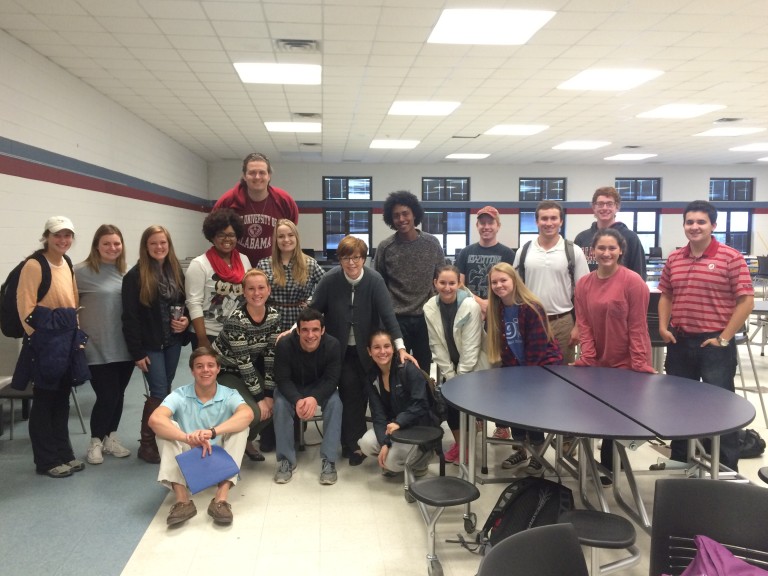January 7th, 2016
Connie Coleman (center) stands with her University of Alabama Honors College student mentors at Hillcrest High School.
As both a high school counselor at Tuscaloosa’s Hillcrest High School and an instructor in The University of Alabama Honors College, Connie Coleman seamlessly facilitates the Blueprints College Access Initiative by connecting Hillcrest ninth graders with her college students every year.
Coleman’s involvement with Blueprints began in 2011, when she collaborated with Alabama Possible staff and Blueprints Founder Nicole Bohannon to bolster the program’s near-peer mentoring model. Near-peer mentoring is a nationally-identified best practice which helps build a culture in which all students truly “know how to go” to post-secondary institutions.
Coleman teaches a Honors Mentoring class each semester at UA, and she said that Blueprints is “a great scaffolding to mentoring.”
Blueprints also provides high school students “with a great ‘road map’ for academic success,” she said. “The information in the curriculum should eliminate those moments late in high school when a student thinks, ‘I wish someone had told me that.’”
One of her favorite Blueprints moments came when a Hillcrest senior student ambassador described ninth grade course options to an incoming freshman.
“When we came to the list of courses, the ambassador noticed Freshman Seminar. He began to tell the new student how much he enjoyed Freshman Seminar because of the college mentors that came each week,” Coleman said. “He described his mentor, remembered his major, and told the young girl about the field trip to Shelton and UA. She promptly chose the course. I was so pleased that the mentoring had made such a positive impact on the young man.”
During the fall semester, 34 UA Honors College student mentors worked with 91 Hillcrest ninth grade students at Hillcrest High School to completed college-going milestones including:
- Learn about career categories and how to align their career goals with their interests and academic strengths.
- Learn how to select a post-secondary institution based on type, education needs, financial factors, career goals, and personal preference.
- Learn about the types of financial aid available to fund higher education and research tuition levels at institutions of interest.
Blueprints will continue this spring with 60 college student mentors working with 90 ninth grade students.
